Are you interested in exercising at home but get overwhelmed with the so many options out there?
Especially as far as cardio equipment goes, treadmills are no longer the best option for everyone.
Rowing machines are getting more and more popular, which is great because their price dropped, making even the best rowing machines very affordable.
Besides being great machines for doing cardio and an excellent way to lose weight, they are also pretty good for strength training.
But how do Rowing Machines compare with elliptical trainers, recumbent exercise bikes, and treadmills?
That’s what we are going to cover in this article! And in great depth, covering every aspect and all the differences between the machines.
We even compare each machine against the other and rate on a scale of 1 to 5 of how good they are for weight loss, strength & muscle building, ease of use and affordability.
Want to know which machine should you get? Read on.
WHAT ARE ROWING MACHINES?
The rowing machine, also called an ergometer, is not a complex piece of exercise equipment. However, it does have unique features that require some background knowledge.
The machine was designed to simulate the actions of rowers who propel boats through water.
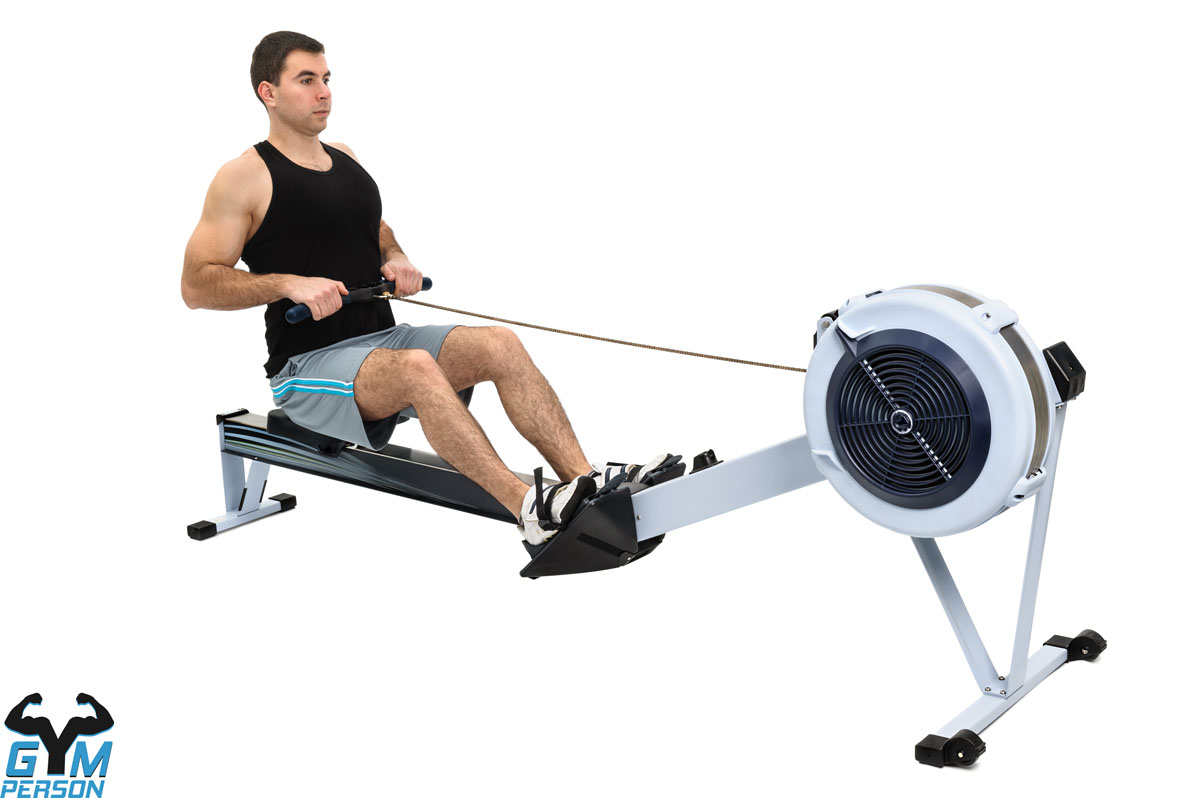
How Rowing Machine Work
While grasping a bar, which acts as the oar, you sit on a sliding seat.
The first movement is a push with your legs away from the front of the machine.
The second movement uses a pulling action, first with the core and then with the arms. Now, you’re at the back of the machine.
To return to the front, reverse the movement: extend the arms, then the body and finally, contract the legs.
The damper is the main adjustment you can make while using the rowing machine. A higher damper setting will give the effect of a slower, heavier boat, while a lower damper setting will feel make the machine act like a lightweight boat.
BENEFITS OF ROWING MACHINES
- Cardiovascular Benefits – You can choose if you would like to take your rowing experience to a high-intensity aerobic level. Maintain prolonged, repetitive strokes at a low damper setting to raise your heart rate, pump your blood and increase oxygen flow. Keep it up for at least 30 minutes to receive the benefits of a full-body cardio workout including better sleep, improved mood, reduced stress and increased energy. Cardio workouts also contribute to a healthier heart, pancreas, skin, brain, and lungs.
- Builds Muscle Strength – The rowing machine works every major muscle group in your body including the legs, glutes, back, abs, shoulders, arms, and wrists. The higher the damper setting, the quicker you’ll build pure muscle. It’s no wonder rowing machines have become so popular in recent years in gyms nationwide.
- Efficient Workout – Are you tight on time? Multitask your workout. Rowing combines cardio and strength training in one workout session.
- Burns Calories – If you’re looking to shed excess weight, the rowing machine is your secret weapon. Rowing consumes innumerable calories at a remarkable speed. Since your whole body participates in this exertion, more fuel is needed to activate multiple body parts in a coordinated manner.
- Low Impact – Do you suffer from pain in your joints? Or perhaps you’re recovering from injury or surgery. If high impact cardio workouts such as running are not an option, take a ride on the rowing machine. When employing the proper technique, your bones and joints experience very little shock. This means you can get mobile and sweaty with minimal stress to joints.
- Promotes Healthy Bones – Research done by Washington University’s School of Medicine has shown that rowing is a great way to build bone mineral density and even fight Osteoporosis.
- Affordable Price – A relatively small investment can provide you with a personal rowing machine, making at-home workouts convenient and less time-consuming. Some really great models start at less than $200, far less than what you could end up spending on other types of workout machines or an annual gym membership.
- Intuitive Use – The rowing machine responds to your commands, offering instant recalibration as you need it. Unlike a treadmill, in which you pre-set the speed and incline, the intensity of the rowing machine depends on your actions, making adjustments intuitive and instantaneous.
- Convenient – Basic use of the rowing machine doesn’t require electricity, programming or setting up. Just hop on and take off!
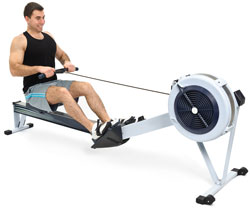
Looking to buy a rowing machine?
POTENTIAL DOWNSIDES
- Uncomfortable Seat – While using the rowing machine, you’ll be sitting on your bum as you slide up and down the rail. Over a period of time, this can cause discomfort or numbness. Ty adding some extra cushion, either by wearing specifically designed rowing shorts or by placing a towel on the seat. Learn more here.
- Friction in the Hands – The repetitive motion of pulling the handle bar might cause you some irritation in the hands. You may experience blisters. Over time, your blisters will turn into callous and the uncomfortable sensation of friction will be minimized. If you prefer, grab a pair of gloves to solve this issue.
- Learning Curve – This is important, if you want to receive all the benefits that the rowing machine can offer, you really need learn proper technique. Educate yourself on the 2 positions and 2 actions. It’s not difficult, however, there is a precise method. Incorrect use could lead to injury.
- Requires Coordination – This characteristic can function more as a positive than a negative, but if you are experiencing a weakness, imbalance or injury some where in the body, take a pause from your rowing routine. For example, if you are suffering from a strain in the wrist, then avoid the rowing machine and focus on exercises that don’t require arm strength, such as running or cycling.
- Can be Noisy – Some machines use a fan to provide wind resistance. At high speeds, they can produce a bit of noise. For a quieter alternative, select a machine that uses magnetic resistance.
ROWING MACHINE TECHNIQUE
It’s important to have a proper technique when using any exercise equipment, but it’s even more important when using rowing machines.
Learning the fundamentals of proper rowing technique will serve you in the long run. Be patient with yourself as you take time to completely understand how to use the machine
If you really want to take it seriously, you can ask a friend or a family member to record yourself in action and analyze your technique, but it’s not something that is required. With just a bit of practice and self-correction, your body will learn to automatically carry you in proper form so you’ll be rowing like a pro.
Take a moment to understand how mastering correct technique will help you work more efficiently and safely.
Efficiency – You will gain an awareness of how the body coordinates to move most efficiently during the rowing motions. Extra movements that don’t thrust your “boat” through “water” take away from the productivity of your workout. Use only the muscles that are actually needed.
Employ the correct order and coordination of movements. The precise alignment, positions and actions of perfect rowing technique are not arbitrary. They are based on physics and will give you the most potent strength using the least amount of force.
Safety – After learning proper technique, you’ll be able to push your limits without risking injury. For example, in the position with your legs extended, be sure to keep your back at an angle of 110 degrees. It your back goes beyond this angle, there is a greater chance of pulling your muscles.
ROWING MACHINE VS. ELLIPTICAL TRAINER
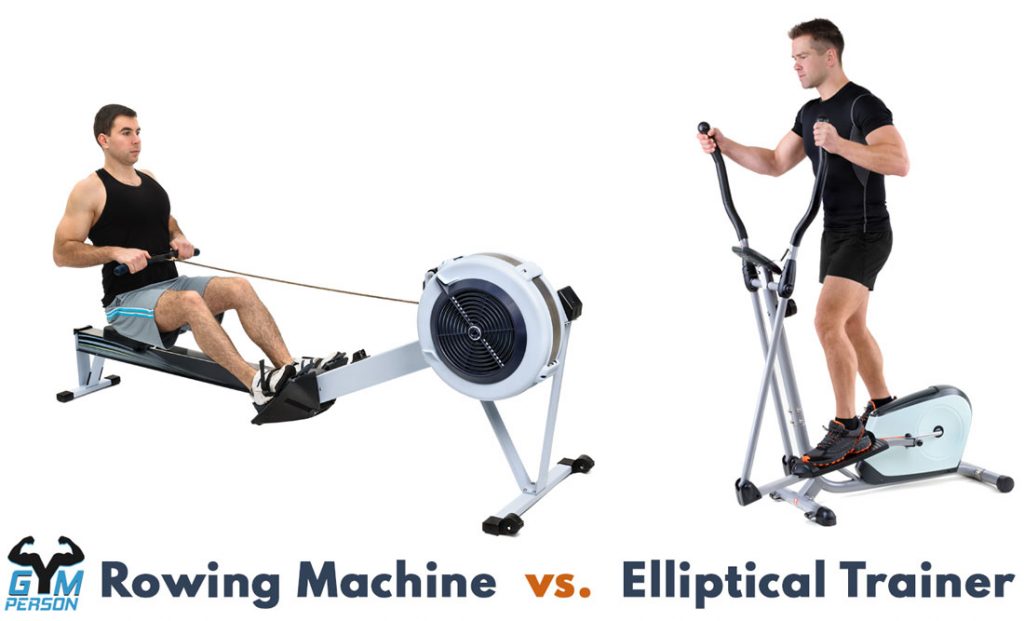
Both machines offer a whole-body workout with low impact, so the elliptical have many benefits similar to rowing machines. The main differences appear in posture and practicality.
For the rowing machine, you’ll remain in a seated position. The movements come directly from a real-life scenario, modeled after the functional activity of manually driving a boat through water.
In contrast, with an elliptical, you stride while being erect. The movements used on this machine are unlike those you are likely to experience in a practical setting, though beneficial nonetheless.
ROWING MACHINE VS ELLIPTICAL – HOME SPACE REQUIREMENTS
By design, rowing machines have to take up more length than elliptical machines. When you sit on the rower, your legs are extended, and the handle you pull is connected to the flywheel which is a couple of feet ahead of you.
Rowing machines are characterized by being long in length, narrow in width and very short in height.
This makes rowing machines ideal for tall users who have to place the machine in a room with a very low ceiling.
In contrast, ellipticals require much more height than rowers, that’s because, first, you are standing rather than sitting, and second, the elliptical pedals keep you elevated a few inches above the floor. The total height requirements of ellipticals are generally your own height plus 15-20 inches.
Most users should be comfortable with either machine.
If you prefer an elliptical, some manufacturers design their elliptical machines to be used in low-ceiling environments.
For the top home ellipticals (even for small places) click here.
ROWING MACHINE VS ELLIPTICAL – FOR CARDIO & WEIGHT LOSS
You can easily achieve a successful cardio workout on either machine. These two machines are similar; the labor comes from enlisting both pushing and pulling actions.
Set the damper low on the rowing machine and set the resistance low on the elliptical. Keep a continuous high speed of movement for at least 30 minutes and you’ll reap the cardio rewards.
ROWING MACHINE VS ELLIPTICAL – FOR MUSCLE GAIN AND MUSCLE TONE
The rowing machine’s intensity comes from repetitively alternating an exertion of strength with a brief moment of recovery.
The movement used on a rowing machine is 2 dimensional, with a distinct pushing of the legs and a pulling of the core and arms.
As a result, the muscles will pump in a similar mechanism as lifting weights. Using a rowing machine will actively build muscles in back, arms, legs and core. Think of the rowing machine as a hybrid apparatus that fuses weightlifting and cardio.
The movement used on an elliptical trainer is more circular. The continuous stepping movements don’t ever start, stop and reverse. Nevertheless, your muscles will still feel the burn.
This machine is a bit more versatile than the rower. You can choose to only work the lower body, leaving the arms stationary. Also, you’re able to adjust the length and shape of stride, increase the incline, and reverse the pedaling. All of these options target slightly different muscles. Overall, you’ll be firing up the arms, back, core and legs.
ROWING MACHINE VS ELLIPTICAL – RELIABILITY
In general these machines take up relatively the same amount of space.
Compact rowers are available for those who have truly limited floor area. Rowing machines are simple and manually operated.
The elliptical is generally a little bit more expensive (although you can find some very affordable ellipticals too), and often comes with electronic, programmable settings. Generally, the elliptical, with its more complex operation, requires more maintenance as the machine ages. You can find the most recommended elliptical machines by clicking here.
ROWING MACHINE VS ELLIPTICAL – PROS & CONS
Rowing Machine Pros
- Budget-friendly price
- Effectively builds muscle
- User controls effort with each stroke
- Doesn’t need electricity
Rowing Machine Cons
- Invariable movement options
- Less natural movement requires instruction before using
Elliptical Pros
- Easy to use
- Versatile movement options
- May burn slightly more calories
Elliptical Cons
- More expensive
- Takes up more space
ROWING MACHINE VS. TREADMILL

Running is a high-impact weight-bearing exercise that can be stressful on the joints.
As you launch your entire physical being through space, you slam down four to eight times your own body weight with each step.
As you can imagine, knee injuries are common among runners.
Rowing on the other hand, offers a low-impact cardio alternative, with proper technique injury is unlikely.
ROWING MACHINE VS TREADMILL – FOR CARDIO & WEIGHT LOSS
These machines demonstrate two very different ways in which to burn calories.
The specific cardio benefits you gain will depend on how vigorously you use each machine. You’ll need to be running at a pace of at least 5 mph on the treadmill for number of burned calories to be comparable to those burned on a rowing machine.
However, once you add an incline to your treadmill program, your total calories burned will be greater than even a vigorous rowing session
As running is essentially launching your entire body through space over and over, it demands some of the highest energy outputs of any physical activity.
ROWING MACHINE VS TREADMILL – FOR MUSCLE GAIN AND MUSCLE TONE
Unlike the treadmill, rowing machines work the whole body – upper, lower and core.
The treadmill mostly works out the leg muscles. Since you remain upright while running, you’ll also need to engage the core to some extent. You’ll increase strength and muscle tone in your quads, hamstrings, glues, and calves, but you not nearly as much as you would on a rowing machine.
The rowing machine works so many more muscles than the treadmill. Rowing develops the back muscles, the arms, particularly the biceps as well as shoulders and legs (quads, hamstrings and calves).
In terms of muscle gain there is no question about it, rowing machine is the winner.
ROWING MACHINE VS TREADMILL – RELIABILITY
Treadmills are inherently less reliable than rowing machines because they require electricity, have large motors and have a treadbelt.
Treadbelts are the surface you are running on, and they tend to wear out and need replacement depending on how heavy the use is.
Treadmill motors are another part that may malfunction which is why treadmill manufacturers don’t typically give long warranty for motor units.
Rowing machines on the other hand, don’t need electricity, don’t have treadbelts and don’t require motors. The rowing machine is the winner in terms of reliability.
ROWING MACHINE VS TREADMILL – PROS & CONS
Rowing Machine Pros
- Less expensive
- Doesn’t require electricity
- Low-impact activity
Rowing Machine Cons
- Less natural movement may require getting used to
Treadmills Pros
- At a speed of at least 5mph, it can burn more calories
- Natural, easy & familiar movement
Treadmills Cons
- Loud
- More bulky than rowing machines
- High impact means greater risk for knee injuries
ROWING MACHINE VS. EXERCISE BIKE
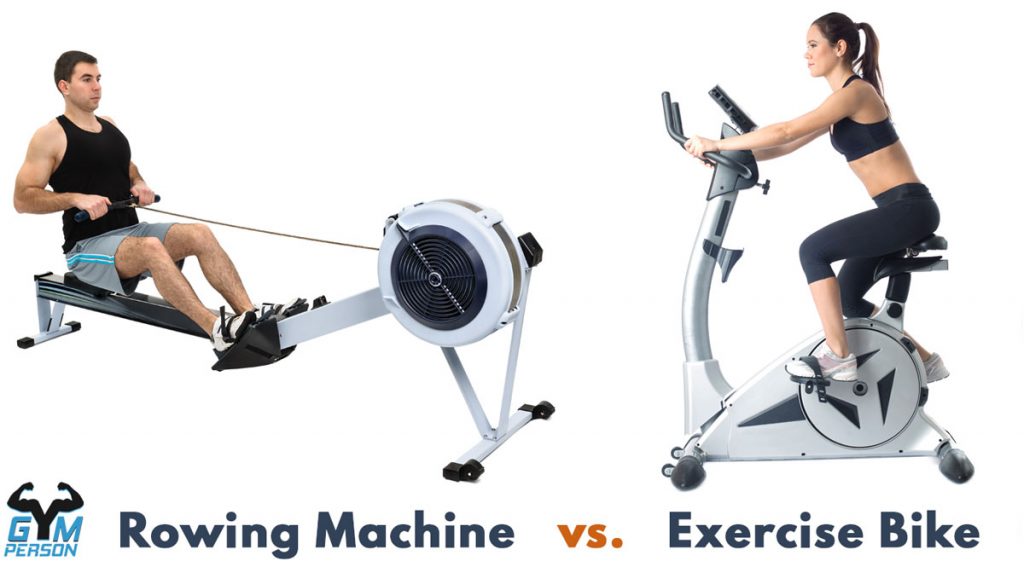
The rowing machine and the exercise bike are both based on recreating an indoor experience from an outdoor activity. The machines regulate drag, simulating the effects of water or wind.
Through these settings, you can change the heaviness of operation. But ultimately, you decide how much effort to produce with each stroke or pedal you take.
UPRIGHT BIKE & RECUMBENT EXERCISE BIKE
An exercise bike is a general term used to describe any stationary bike.
Every stationary bike is essentially an exercise bike.
However, there are three major types of exercise bikes: recumbent bikes, upright bike and spin bikes. There are several differences between recumbent and upright bikes.
However, the main difference between them is that the recumbent bike has a backrest and the seated position reminds sitting on a regular chair, while the upright bike has no backrest and is very much like a standard road sports bike.
In terms of comfort, there’s hardly any cardio equipment that can beat the comfortable seated position of the recumbent bike.
As for how many calories are burned during the workout, a recumbent bike and an upright bike will burn more or less the same amount of calories as a rowing machine, though spin bike may burn more calories than other types of exercise bikes.
The Ultimate Guide to
Recumbent Exercise Bikes
ROWING MACHINE VS EXERCISE BIKE- FOR CARDIO & WEIGHT LOSS
Because cycling relies primarily on the heftiest muscles in the body, it requires more effort and energy expenditure.
This difference is expressed in the overall calorie count, with cycling racking up greater numbers per same time spent on the machine.
If you want the calories burned on a rowing machine to match that of an upright or recumbent exercise bike, you should increase your intensity.
Make sure your cycling speed hits at least 14 mph to surpass the calories burned during a lively rowing session.
ROWING MACHINE VS EXERCISE BIKE – FOR MUSCLE GAIN AND MUSCLE TONE
By now we know that rowing provides opportunities for the upper, middle and lower body to gain muscle.
Stationary bikes allow just the lower body to shine. The muscles used while cycling include the quads, hamstrings, groin and glutes.
Unlike the rowing machine, elliptical and treadmill, the passive sitting position used on an exercise bike means that your core is not working. This piece of equipment truly isolates the legs. The winner here is clearly the rowing machine.
ROWING MACHINE VS EXERCISE BIKE – RELIABILITY
Exercise bikes and rowing machines come in a comparable price range. They both fit snuggly into limited spaces.
They are both reasonable when it comes to noise production, although the magnetic rower models definitely win the quietest machine award.
Many stationary bicycles have built in programs, in which the machine delivers a pre-set workout with automatic changes in resistance.
ROWING MACHINE VS EXERCISE BIKE- PROS & CONS
Rowing Machine Pros
- Slightly less expensive than exercise bikes
- Magnetic rowing machines models are quieter
- Offers a full-body workout
Rowing Machine Cons
- May take a little bit more space than an exercise bike.
- Less familiar movements than biking.
- Not the right choice for those recovering from an upper body injury
Exercise Bike Pros
- No learning curve – every knows how to cycle
- Great for rehab and those in the process of recovering from an injury
- Programmable workout options
Exercise Bike Cons
- Only the leg muscles are invovled
COMPARISON & RATINGS
When deciding on which exercise machine best fits your needs, you’ll need to sift through a lot of information.
We’ve complied everything you need to know in an easy-to-review comparison chart so you can quickly and easily decide which machine is perfect for your home gym. We rated each machine out of 5 stars.
FAT BURNING – WEIGHT LOSS
Rowing Machine
⭐️⭐️⭐️⭐️ 4/5
Elliptical Trainer
⭐️⭐️⭐️⭐️ 4/5
Treadmill
⭐️⭐️⭐️⭐️⭐️ 5/5
Exercise Bike
⭐️⭐️⭐️⭐️ 4/5
Winner: Treadmill. According to research, you will burn the most calories on a treadmill compared to the other gym machines. This study determines that your perception of effort on a treadmill is actually less than your actual effort, making it easier for you to push extra hard.
STRENGTH & MUSCLE
Rowing Machine
⭐️⭐️⭐️⭐️⭐️ 5/5
Elliptical Trainer
⭐️⭐️⭐️ 3/5
Treadmill
⭐️⭐️ 2.5/5
Exercise Bike
⭐️⭐️ 2.5/5
Winner: Rowing Machine. You’ll gain lots of pure strength from using the rower. Also, this is the only machine listed that targets the back and core muscles.
EASY OF USE
Rowing Machine
⭐️⭐️⭐️ 3/5
Elliptical Trainer
⭐️⭐️⭐️⭐️ 4/5
Treadmill
⭐️⭐️⭐️⭐️⭐️ 5/5
Exercise Bike
⭐️⭐️⭐️⭐️⭐️ 5/5
Winner: Exercise Bicycle & Treadmills. We’ve been pedaling since we were kids and been walking since we were babies. What could be easier?
AFFORDABILITY
Rowing Machine
⭐️⭐️⭐️⭐️⭐️ 5/5
Elliptical Trainer
⭐️⭐️⭐️⭐️ 4/5
Treadmill
⭐️⭐️⭐️ 3/5
Exercise Bike
⭐️⭐️⭐️⭐️ 4/5
Winner: Rowing Machine. High quality rowers are available for under $150. Other machines require more complex motors, moving parts, and programs, bolstering the overall price.
FINAL WORDS OF ADVICE
So, which machine is right for you?
If you’re already relatively strong and healthy and you’re looking to burn fat as quickly as possible, running on an inclined treadmill can’t be beat.
You can find the most recommended treadmills in this link : best treadmills for any weight.
If you need to go for a high-intensity cardio workout without pounding weight on your joints, head over to the elliptical, where your whole body gets involved in the low-impact action.
If you are looking for the best ellipticals for home, click here.
We also reviewed ultra low budget ellipticals which you can find here.
Are you looking for a gentle easy workout session? One that’s not too stressful and may have your hands free for using your mobile phone than go for the classic exercise bicycle.
BUT…
If you are looking to cross train.
If you are bored with the usual gym equipment.
If you want to get stronger.
If you want to work out your whole body and increase muscle mass which long term can burn more fat than:
Try out the rowing machine!!
For a list of the Top 10 Rowing Machines click here

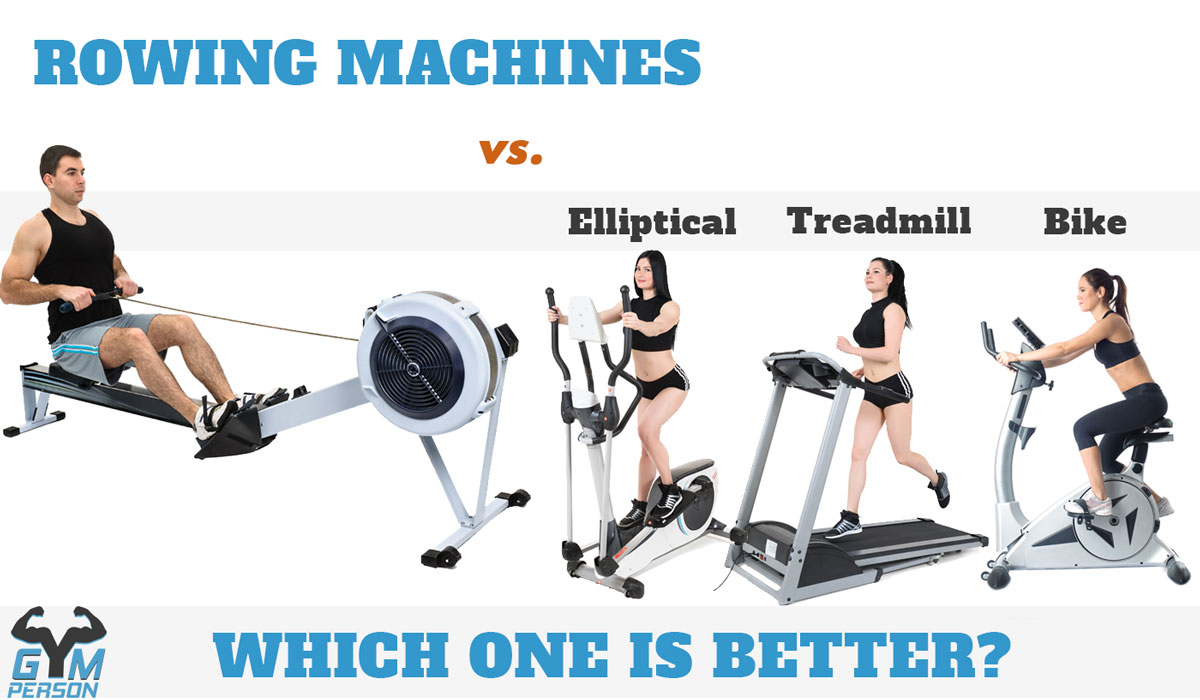
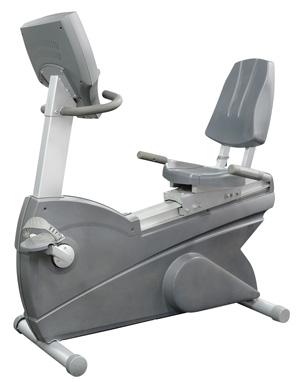
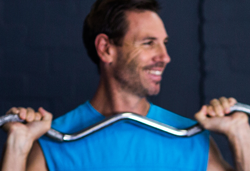


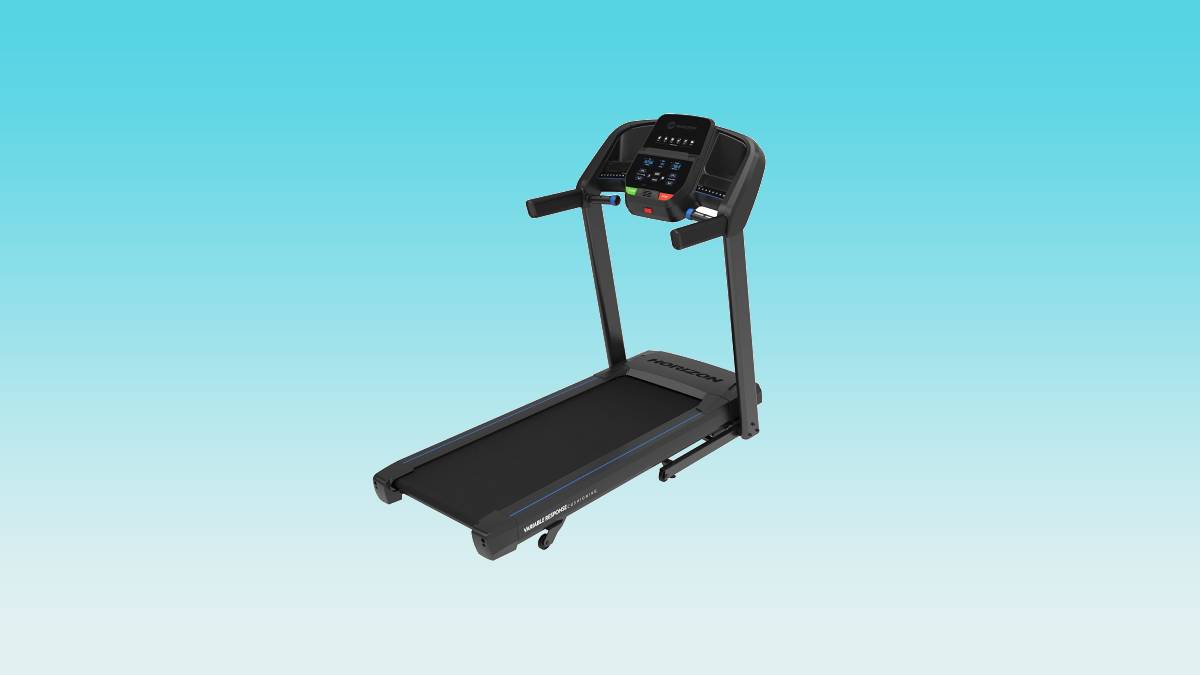
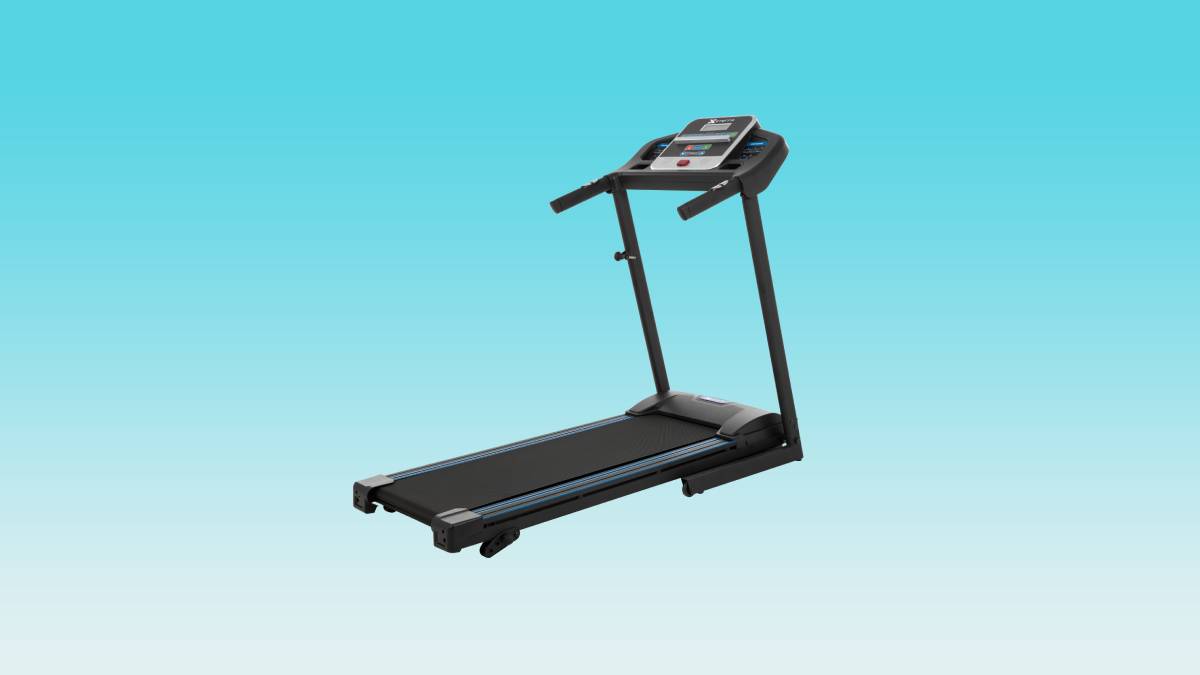
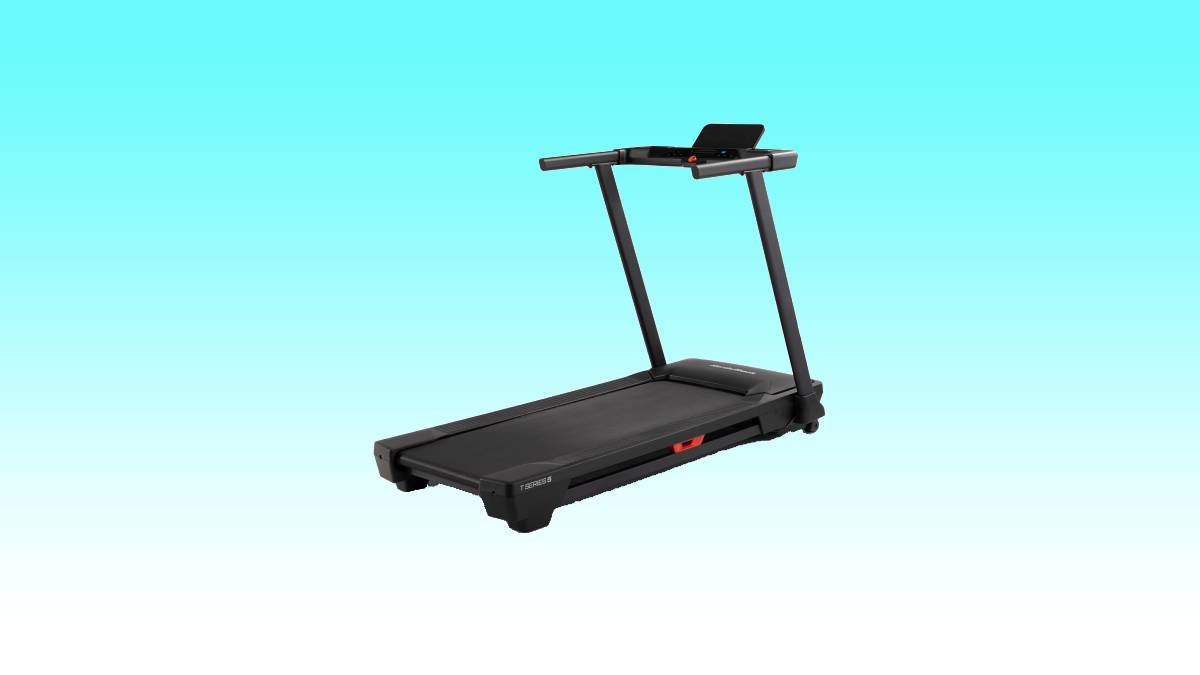
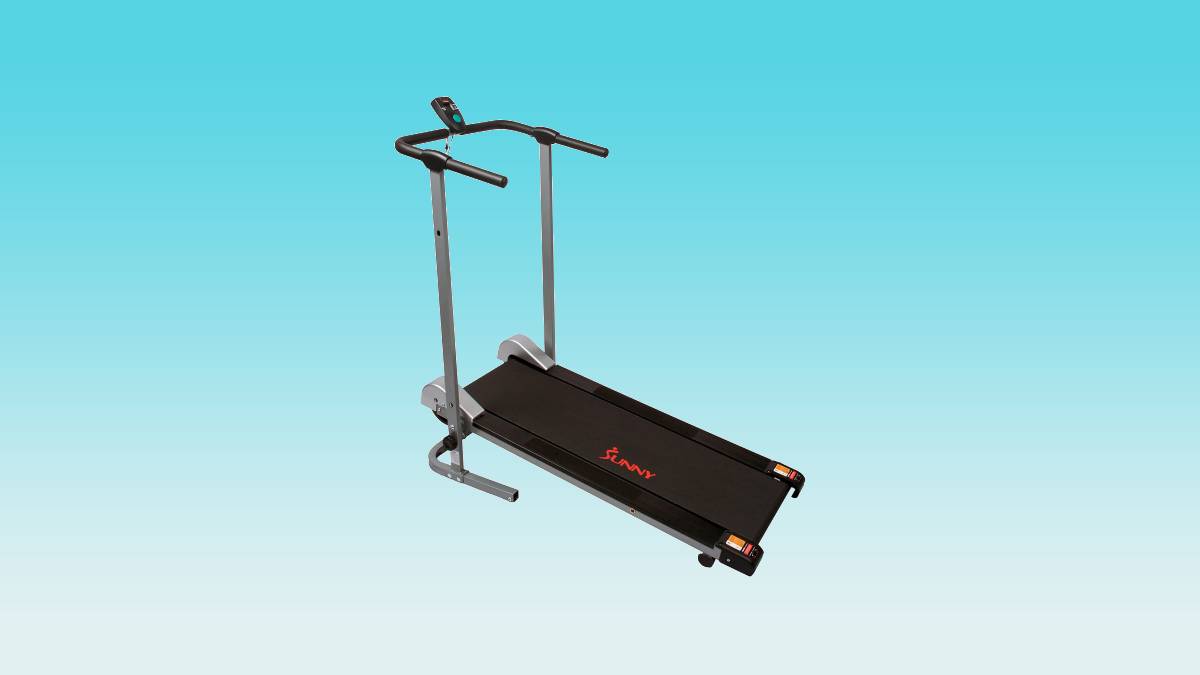
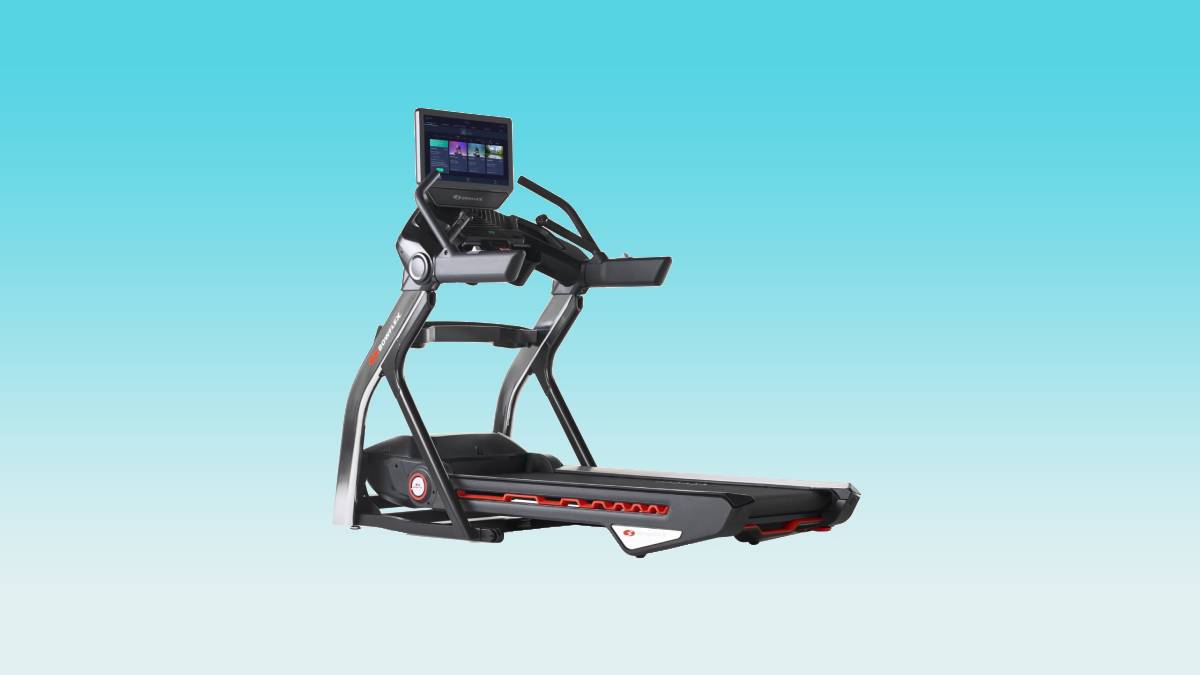
Leave a Reply